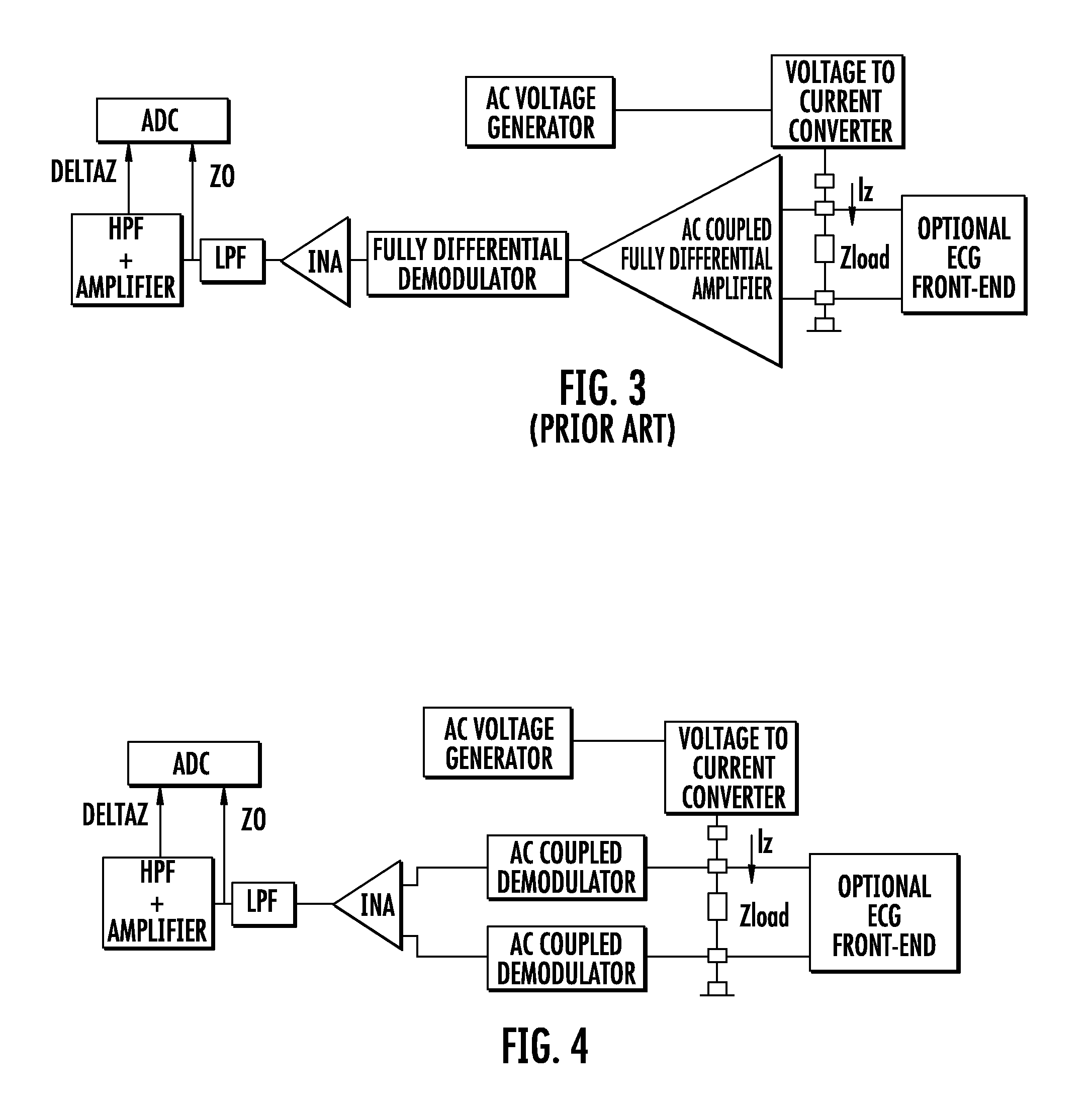Device for measuring impedance of biologic tissues including an alternating current (AC) coupled voltage-to-current converter
a technology of alternating current and biological tissues, applied in the field of measuring instruments, can solve the problems of large current consumption, inability to work on modulated input signals, and relative difficulty in determining relatively precise and reliable mathematical models of bioimpedance, and achieve the effect of high output impedan
- Summary
- Abstract
- Description
- Claims
- Application Information
AI Technical Summary
Benefits of technology
Problems solved by technology
Method used
Image
Examples
Embodiment Construction
[0044]An embodiment of a device for measuring the impedance of biological tissue is illustrated in FIG. 4. The circuit blocks in common with the prior devices of FIGS. 2 and 3 are identified by the same labels.
[0045]The device has two single-end AM demodulators. Each demodulates the voltage towards ground of a respective electrode and generates a respective baseband signal. The demodulated baseband signals are supplied in input to an INA that generates an amplified copy of their difference.
[0046]Differently from the known device of FIG. 2, the INA amplifies a baseband signal, thus, it has a relatively large gain and a good CMRR in the baseband range of frequencies. Therefore it may be possible to use a low cost and low power consumption INA.
[0047]Differently from the prior device of FIG. 3 disclosed in Rafael Gonzalez-Landaeta, Oscar Casas, and Ramon Pallas-Areny, Heart rate detection from plantar bioimpedance measurements. IEEE Transactions on Biomedical Engineering, 55)3):1163-116...
PUM
| Property | Measurement | Unit |
|---|---|---|
| frequency | aaaaa | aaaaa |
| frequencies | aaaaa | aaaaa |
| impedance | aaaaa | aaaaa |
Abstract
Description
Claims
Application Information
 Login to View More
Login to View More - R&D
- Intellectual Property
- Life Sciences
- Materials
- Tech Scout
- Unparalleled Data Quality
- Higher Quality Content
- 60% Fewer Hallucinations
Browse by: Latest US Patents, China's latest patents, Technical Efficacy Thesaurus, Application Domain, Technology Topic, Popular Technical Reports.
© 2025 PatSnap. All rights reserved.Legal|Privacy policy|Modern Slavery Act Transparency Statement|Sitemap|About US| Contact US: help@patsnap.com



